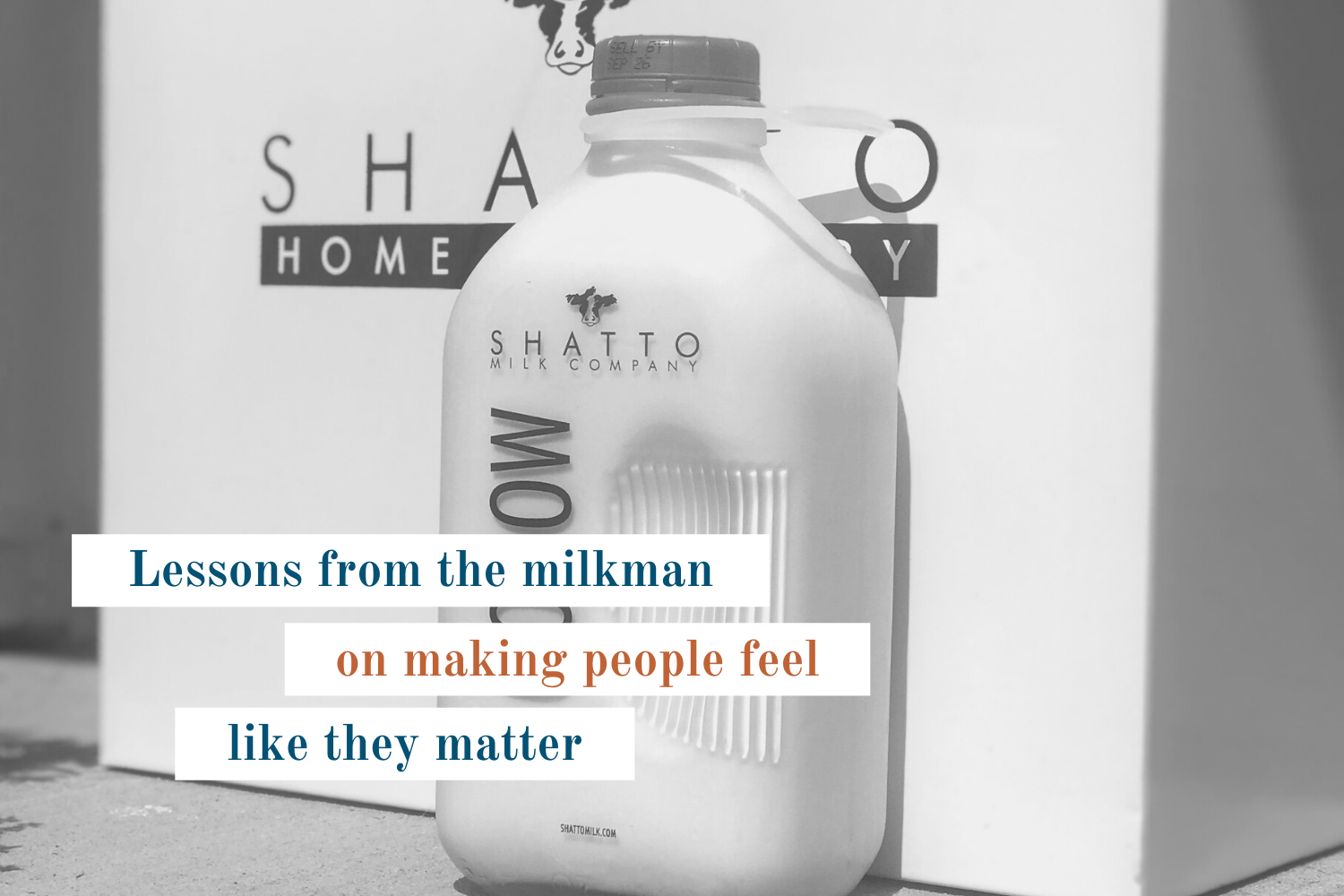Lessons From the Milkman: Making People Feel Like They Matter
This might seem a little odd, but I have a feeling I’m going to talk about my milkman quite a bit this year. Or at least, I may spend a lot of time talking about the local milk delivery company and how they approach building their community and engaging their customers.
You might be thinking, “Wait, what? You have a milkman?!” When I’ve talked about Rob the Milkman to my friends, that’s one of the first responses I get. And yes! I have a milkman now. He’s my favorite milkman of all time (and also the very first milkman I’ve ever had but that’s neither here nor there).
Let me tell you why I love my milkman so much and why I might want to talk about Shatto Milk Company on a website about communication: The people at Shatto Milk Company are clearly focused on building and serving their community well. They value their customers and they make it clear from the very beginning. I think there are lessons to be learned from what this milk company is doing. The lesson I want to talk about today is how to make a new customer (or donor) feel like they matter right from the start.
Making someone feel like they matter
We moved to Kansas six weeks ago, and there’s nothing like being new to a place in the middle of a pandemic to make you feel out of place. It’s my fourth move in 10 years (which isn’t so bad considering we are a military family), so I’ve spent a considerable amount of time over the last decade being new to town. Anyone that makes me feel like they are glad to have me in their community is someone I pay attention to. Shatto Milk Company did just that.
Let me back up for a minute. Before I moved here, I had several people tell me that I just had to get the delivered milk. It was so good, you could get all sorts of local food, including eggs, and they even have fun flavored milk for special occasions. Ok, sounds good and worth trying. I signed up. My delivery was scheduled for the following Thursday, and I was excited to see what Cotton Candy milk tasted like. Maybe I’d even share it with my kids 😉.
When I opened the ice chest on my porch that Thursday, I found my milk and eggs, and I also found a letter from the founder of the home delivery service, Matt Shatto. Underneath that letter was one from my milkman, Rob. Matt thanked me in his letter for being a customer and for being “part of our family farm story.” He also thanked me for being a neighbor and promised to be a great neighbor to me. Wow. What a welcome. Rob, my milkman, also spent time in his letter thanking me for my business. He told me he cared very much about my product experience, and then he shared a little bit about himself. By the time I was done reading, I felt like I’d made a new friend—and I’d never even met him.
A simple but genuine note of thanks
Those letters, while so simple, made such an impression on me. It was clear that this company wanted me to feel like I was a part of their community, and they succeeded. They wanted me to feel like I mattered to them. Me, a new customer who only bought some milk and eggs. I definitely wasn’t a big spender.
Without ever having met either Rob the Milkman or Matt the Founder, I suddenly felt like I’d made two new connections in town. I wasn’t just getting the milk. As Matt said in his letter, I was a part of their story. How’s that for belonging?
You know as well as I do that I can get my milk and eggs from the grocery store. I go there every week. But I can’t get Shatto’s milk and eggs there, and I certainly don’t get the feeling that I’m a part of my milkman’s community in the dairy aisle of the commissary. I’m not a part of that story. I don’t get the feeling that I matter. So each week, I keep getting my milk and eggs delivered by Rob the Milkman.
How nonprofits can be more like the milkman
When it comes to nonprofits, making a donor feel included in the organization from the very beginning is critical to engagement. A genuine note of thanks for connecting and supporting your organization can make a donor feel like they matter, no matter the size of the donation. It’s far easier (and cheaper) to keep a donor than to find a new one, and you never realize a person’s full capacity to give based on a first donation.
Nonprofits must be relentlessly focused on how they make donors feel, right from the beginning of their relationship. They must be vigilant about making connections and involving donors in the story right away. They must strive to make a good, genuine first impression, even if the only way they can do it is with a letter in an ice chest. The good news is, when it’s done with sincerity—when a nonprofit really helps a new donor feel like they matter—it works very well.
Whether you reach out and sincerely thank a new donor or not, you are making a first impression. How can you make that first impression a good one?
…
If you liked this post, don’t forget to subscribe to my newsletter so you can get more great content about communicating with your audience right in your inbox.
More articles you might enjoy:
10 reasons your nonprofit should create a podcast

